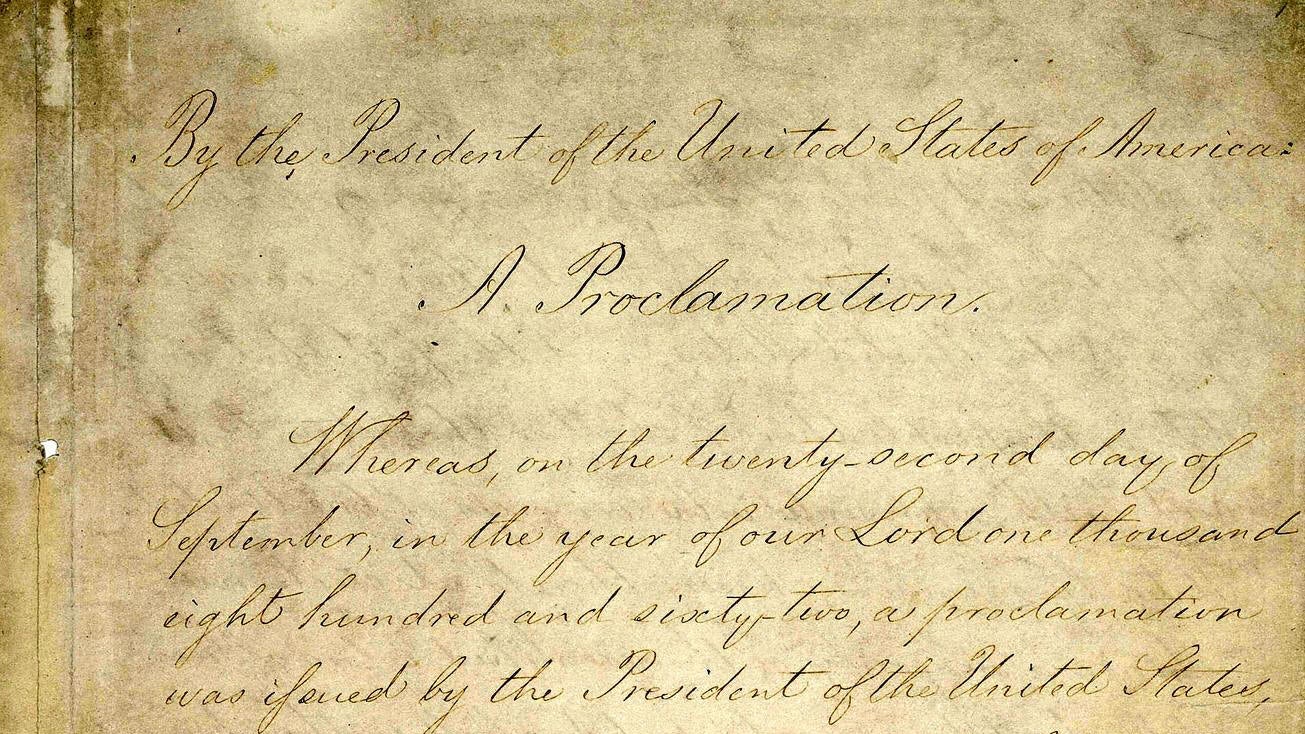
The Emancipation Proclamation stands as a monumental moment in American history. Issued by President Abraham Lincoln on January 1, 1863, it declared that all enslaved people in Confederate states were to be set free. This bold move didn't just aim to abolish slavery but also sought to weaken the Confederacy during the Civil War. While it didn't immediately free all enslaved individuals, it marked a significant turning point. The proclamation paved the way for the Thirteenth Amendment, which ultimately abolished slavery in the United States. Understanding the Emancipation Proclamation helps us appreciate the struggles and triumphs that shaped the nation.
The Emancipation Proclamation: A Turning Point in History
The Emancipation Proclamation is one of the most significant documents in American history. Issued by President Abraham Lincoln during the Civil War, it changed the course of the nation.
-
Issued on January 1, 1863: President Lincoln signed the Emancipation Proclamation on this date, declaring all slaves in Confederate states to be free.
-
Preliminary Proclamation: Lincoln issued a preliminary version on September 22, 1862, giving the Confederate states 100 days to return to the Union or face the freeing of their slaves.
-
Limited Scope: The proclamation only applied to states in rebellion, not to slave-holding border states or areas under Union control.
-
Military Strategy: Lincoln used the proclamation as a war measure, aiming to weaken the Confederacy by depriving it of its labor force.
Impact on Slavery and the Civil War
The Emancipation Proclamation had profound effects on the institution of slavery and the progress of the Civil War.
-
Moral Cause: It shifted the war’s focus from preserving the Union to a fight for human freedom, gaining support from abolitionists and foreign nations.
-
African American Soldiers: The proclamation allowed African Americans to enlist in the Union Army, leading to nearly 200,000 black soldiers and sailors fighting for the Union.
-
Undermining the Confederacy: By freeing slaves in Confederate states, it aimed to disrupt the Southern economy and war effort.
-
Mixed Reactions: While celebrated by abolitionists, it faced criticism from those who believed it didn’t go far enough or feared it would prolong the war.
Legal and Political Ramifications
The Emancipation Proclamation had significant legal and political consequences, influencing future legislation and the nation's trajectory.
-
13th Amendment: It paved the way for the 13th Amendment, which abolished slavery throughout the United States in 1865.
-
Lincoln’s Legacy: The proclamation solidified Lincoln’s legacy as the Great Emancipator, though his motivations and the document’s limitations are still debated.
-
International Impact: It discouraged European nations, particularly Britain and France, from recognizing or supporting the Confederacy.
-
Legal Challenges: Some questioned its legality, arguing that Lincoln overstepped his presidential powers, but it was never overturned.
Cultural and Social Effects
Beyond its immediate political and military impact, the Emancipation Proclamation had lasting cultural and social effects.
-
Symbol of Freedom: It became a powerful symbol of freedom and justice, inspiring future civil rights movements.
-
Juneteenth: The proclamation is celebrated on Juneteenth, marking the day in 1865 when enslaved people in Texas learned of their freedom.
-
Education and Awareness: It increased awareness about the horrors of slavery and the need for equality, influencing literature, art, and education.
-
Family Reunification: Freed slaves sought to reunite with family members who had been sold or separated, leading to new communities and social structures.
Controversies and Misconceptions
Despite its significance, the Emancipation Proclamation is often misunderstood and surrounded by myths.
-
Not Immediate Freedom: It didn’t immediately free all slaves; freedom came gradually as Union troops advanced.
-
Lincoln’s Intentions: Some argue Lincoln’s primary goal was preserving the Union, with emancipation as a secondary objective.
-
Economic Impact: The proclamation had a significant economic impact, disrupting the Southern economy and labor system.
-
Resistance and Enforcement: Enforcing the proclamation was challenging, with resistance from Confederate states and varying levels of compliance.
Legacy and Modern Relevance
The Emancipation Proclamation continues to resonate today, influencing contemporary discussions on freedom and equality.
-
Civil Rights Movement: It inspired leaders like Martin Luther King Jr., who referenced it in his fight for civil rights.
-
Ongoing Struggle: The proclamation reminds us that the fight for equality and justice is ongoing, encouraging continued efforts toward a more equitable society.
The Lasting Impact of the Emancipation Proclamation
The Emancipation Proclamation wasn’t just a piece of paper; it was a turning point in American history. By declaring the freedom of slaves in Confederate states, it shifted the Civil War’s focus to human rights. This bold move by President Lincoln laid the groundwork for the 13th Amendment, which abolished slavery entirely.
The Proclamation also allowed African Americans to join the Union Army, adding strength to the North’s cause. It inspired countless people and movements fighting for equality and justice. Even today, its legacy continues to remind us of the ongoing struggle for civil rights.
Understanding these facts about the Emancipation Proclamation helps us appreciate the sacrifices made and the progress achieved. It’s a testament to the power of courage and conviction in shaping a better future.
Was this page helpful?
Our commitment to delivering trustworthy and engaging content is at the heart of what we do. Each fact on our site is contributed by real users like you, bringing a wealth of diverse insights and information. To ensure the highest standards of accuracy and reliability, our dedicated editors meticulously review each submission. This process guarantees that the facts we share are not only fascinating but also credible. Trust in our commitment to quality and authenticity as you explore and learn with us.


